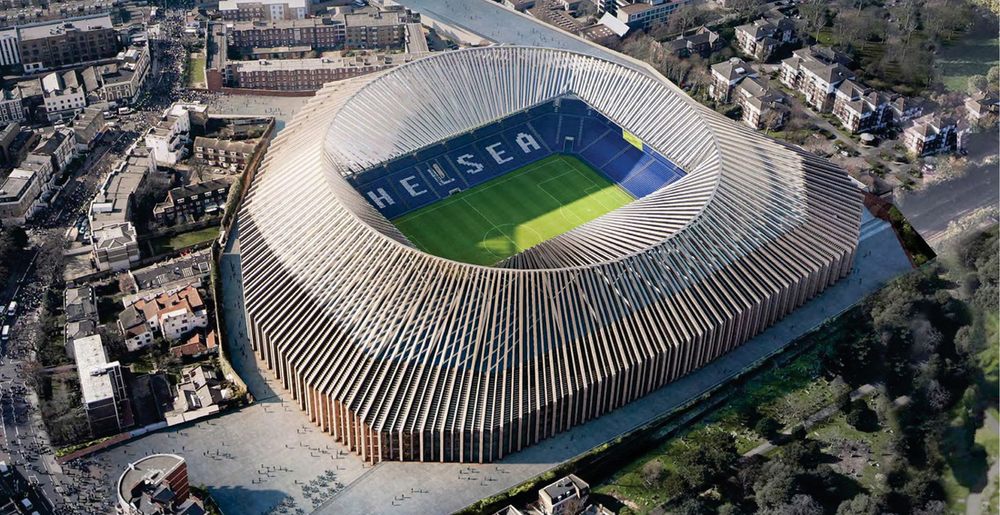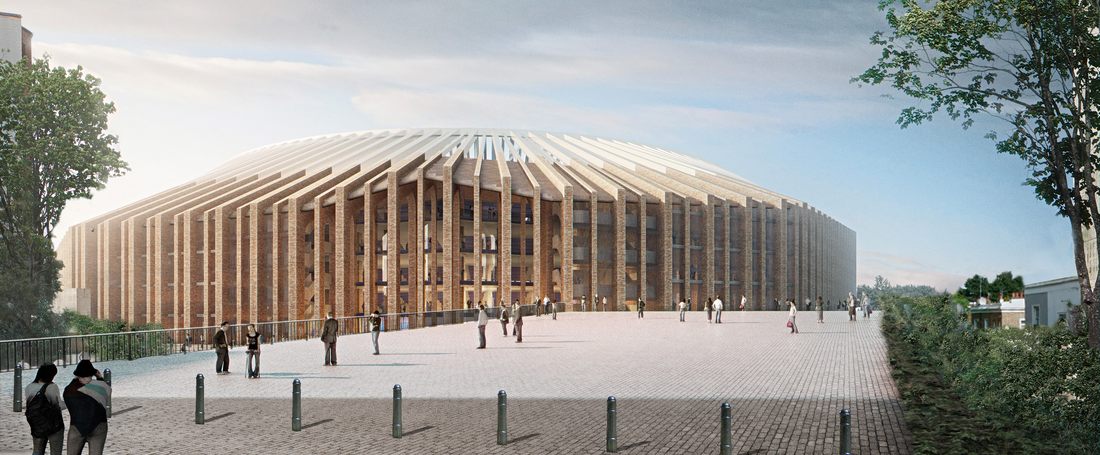London: Finally a breakthrough for Chelsea?
source: StadiumDB.com; author: michał
 Only an unexpected turn of events could now stop Chelsea’s planning permission, now recommended for approval. New Stamford Bridge should be ready in 2021.
Only an unexpected turn of events could now stop Chelsea’s planning permission, now recommended for approval. New Stamford Bridge should be ready in 2021.
Advertisement
On Wednesday, Jan 11, the Hammersmith & Fulham Planning Committee will discuss the planning application by Chelsea FC. Reconstruction of Stamford Bridge has been recommended for approval and if the approval is granted it will then be presented to London mayor Sadiq Khan.
If greenlighted by Khan as well, construction may finally begin. It’s already 3 months behind the initial schedule because Chelsea were hoping to begin in October 2016. Or so was the plan back in late 2015, when they first submitted the planning application. It then needed amendments to improve environmental protections, slight changes were also made to the architecture.
 © Herzog & de Meuron / Chelsea FC
© Herzog & de Meuron / Chelsea FC
No-one expects a different outcome
Before Wednesday the stadium plan is recommended for approval in official report by John Sanchez, case officer for the application. Sanchez outlined four crucial reasons why the application should be approved.
1) Principle of Development. Increased capacity football stadium (60,000 instead of 42,000) and ancillary uses would continue the economic, cultural and social benefits and is supported in land use terms. Sanchez lists a long series of local planning documents (both in borough and wider city) which the proposed stadium scheme is in line with. In short: Chelsea FC staying in a modern football stadium is considered an asset for Hammersmith & Fulham.
 © Herzog & de Meuron / Chelsea FC
© Herzog & de Meuron / Chelsea FC
2) Housing. The new stadium’s increased size will require demolition of some nearby buildings (in total 38 residential dwellings are expected to disappear, equivalent to 4,000 m2). That’s undesirable in principle, due to London’s never-ending housing shortage. However the report suggests that investors would contribute financially (£3.75m) instead of building replacement housing on site, offering resources to offset the demolished houses in a different part of the borough.
3) Employment and local economy. During the 4-year redevelopment of the stadium some 800 full-time jobs would be gone, both at the stadium and in direct connection to its operation. On the other hand, there will be in excess of 1,000 jobs at the construction site and once the new stadium opens it’s expected that full-time-job number will grow by 120+ compared to the current state. Employment is expected to grow even despite two Stamford Bridge hotels being set for demolition to make way for the new stadium.
4) Design and heritage. The report uses almost 250 words to describe it, we’ll be much shorter. Herzog and De Meuron’s design offers great improvement compared to current quality of the architecture and urban planning.
In case the report wasn’t enough, public consultation during the process showed overwhelming support from local residents. Of 800 opinions sent vast majority (70%) were in favour of Chelsea’s plan.
Relocation in 2021
We’re yet to learn the detailed schedule of Stamford Bridge’s replacement, depending on further proceedings. However, should there be no more obstacles, work might begin after the 2016/17 Premier League season. Initial phases would see some of the ancillary buildings around the stadium demolished while Chelsea continue to play their games at home throughout 2017/18.
Only in mid-2018 the team would relocate to Wembley, changing places with Tottenham Hotspur who at that time are expected to move back from Wembley to their new stadium. Chelsea is likely to stay longer at the national stadium, perhaps as long as three seasons. If that’s the case, the new 60,000-seater worth £500 million ($615m) will open to the public in the summer of 2021.
Advertisement
 StadiumDB
StadiumDB ©
©  ©
©